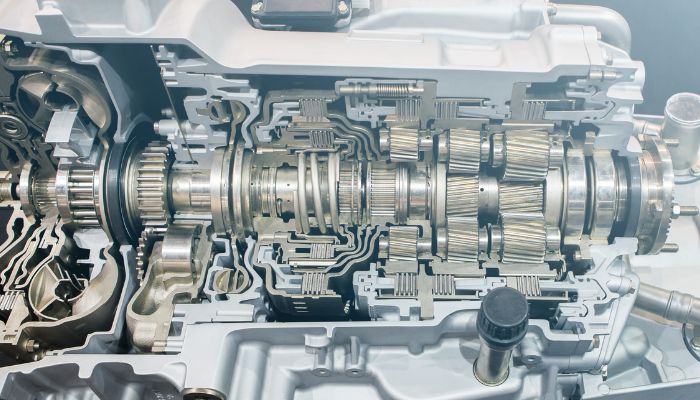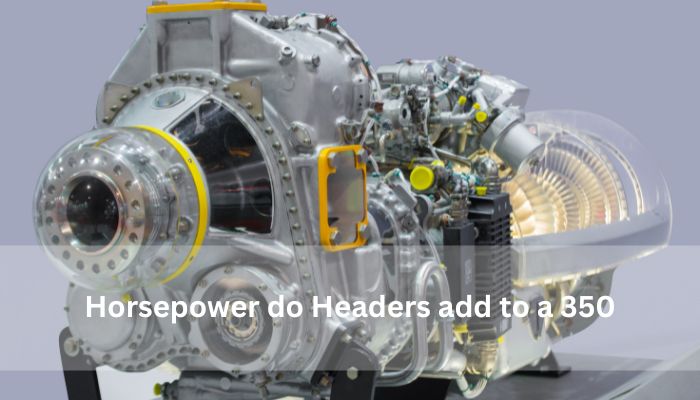How Much Horsepower do Headers add to a 350
Are you looking to get more power out of your 350 engine? Installing headers is one way to do just that. In this blog article, we’ll explore how much horsepower can be added by installing headers on a 350 engine and the benefits of doing so. We’ll also look at what you need to know about header installation for your 350 in order to maximize performance and unleash its hidden potential.
Headers are an important component of any engine, and they can have a big impact on the overall performance of your vehicle. But just how much horsepower do headers add to a 350?
The answer depends on several factors, including the type of header you choose and how well it is installed. Generally speaking, however, installing headers can increase your engine’s power output by up to 30%. This means that if you have a 350 with 150 horsepower before installation, adding headers could potentially give you 195 horsepower afterward.
However, this isn’t always the case as there are other components that affect power output such as camshafts and intake manifolds. The best way to determine exactly how much additional power your new headers will provide is through dyno testing or using computer simulations like those offered by companies like SuperFlow Technologies or Dynojet Research Incorporated.
Another factor to consider when trying to figure out just how much extra power comes from adding headers is exhaust flow rate – which refers to the amount of air being pushed out through each cylinder in order for combustion efficiency and maximum torque production at all RPM ranges.
If your current exhaust system has poor flow rates due to restrictions caused by bends or clogs then replacing it with high-flow aftermarket parts such as long tube stainless steel headers could significantly improve airflow leading directly into more efficient combustion resulting in increased horsepower gains over stock systems (upwards of 15%).

How Much Horsepower do Headers add to a 350
Unlocking the power of headers on a 350 engine is an exciting prospect for many car enthusiasts. Headers are one of the most effective ways to increase horsepower and torque in any vehicle, but they can be especially beneficial when applied to a 350 engine.
By replacing the stock exhaust manifold with headers, you can dramatically improve your vehicle’s performance by allowing it to breathe more efficiently. This improved airflow allows for greater combustion efficiency and ultimately increases horsepower and torque output from your engine.
Headers also provide better sound quality than stock manifolds due to their larger diameter pipes which allow for a smoother flow of exhaust gases out of the cylinder head into the atmosphere. In addition, they reduce backpressure in your system which helps prevent overheating issues that could lead to costly repairs down the road.
How to Increase Horsepower with Headers
Headers are one of the most effective ways to increase horsepower in your vehicle. They allow for more efficient exhaust flow, which can result in a significant boost in power. Installing headers is relatively simple and can be done with basic tools and some mechanical know-how. Here are some tips on how to maximize the benefits of headers when increasing horsepower:
1) Choose quality parts – When selecting headers, make sure you opt for high-quality components that will last and provide optimal performance gains. Look for materials such as stainless steel or titanium alloy that won’t corrode over time due to heat or moisture exposure.
2) Consider header length – The length of the header tubes should match up with your engine size so they don’t create too much back pressure, which could reduce efficiency gains from installing them. Longer tubes may give you better performance but also require more space under the hood, so consider this before making a purchase decision.

3) Install an aftermarket exhaust system – An aftermarket exhaust system will help ensure maximum efficiency from your new headers by allowing air to escape quickly and easily through its larger diameter pipes compared to stock systems found on many vehicles today. This helps eliminate any backpressure issues caused by restrictive factory designs while providing additional power increases at higher RPMs due to improved airflow dynamics throughout the entire system.
4) Tune it up – After installation is complete, it’s important that you have your vehicle professionally tuned so all components work together optimally without causing any damage or reduced fuel economy due to incorrect settings being used during calibration processes like spark timing adjustments, etc.
Exploring the Benefits of Adding Headers to Your 350
Headers are an essential part of any website or blog post. They help to structure the content and make it easier for readers to find what they’re looking for. But did you know that adding headers can also have a positive impact on your SEO?
When search engines crawl a website, they look at the headings first in order to understand what the page is about. Headers provide clues as to which keywords should be associated with each page, helping them rank higher in search engine results pages (SERPs). This means that by using headers strategically, you can increase your chances of being found by potential customers who are searching for products or services related to yours.
In addition, headers break up large chunks of text into smaller sections making it easier and more enjoyable for readers to consume information quickly without becoming overwhelmed or bored. By providing clear direction within each section through well-crafted headlines, users will be able to stay focused on important points while skimming over less relevant ones if needed.
Maximizing Performance: The Impact of Installing Headers on a 350
Maximizing performance is a key goal for many car enthusiasts, and one of the most effective ways to do this is by installing headers on a 350 engine. Headers are exhaust pipes that connect directly to the cylinder head, allowing for improved airflow and increased power output.
The installation of headers can have an immediate impact on your vehicle’s performance, as it helps reduce backpressure in the exhaust system which allows more air into the cylinders during combustion. This results in higher horsepower gains than if you were just using stock exhaust components alone.
In addition to increasing power output, installing headers also reduces weight from your vehicle due to their lightweight construction compared with factory parts. This means that not only will you be able to accelerate faster but also get better fuel economy at highway speeds due to less drag from heavier parts being removed from the underhood area.
Furthermore, since they are made out of stainless steel or ceramic coated materials, they offer superior durability over time when compared with stock components which may rust or corrode over time leading them to need replacement sooner rather than later down the road life cycle.
Finally, another benefit associated with header installation is improved sound quality coming out of your tailpipe as well. With larger diameter piping, there’s less restriction, meaning more noise produced when revving up the engine so you’ll be sure to turn heads wherever you go! All these factors combined make investing in a new set of headers a worthwhile investment if looking to maximize the performance of a potential 350 engine.

Unleash Hidden Potential: What You Need to Know About Header Installation for Your 350
Installing headers on your 350 engine can be a great way to unleash its hidden potential. But it’s important to know what you’re doing before you start the job, as there are several key steps that must be followed in order for the installation to go smoothly and produce maximum performance gains.
The first step is selecting the right header for your vehicle and engine type. It’s important to choose one that is designed specifically for your make, model, and year of car, as this will ensure proper fitment and optimal performance gains. Once you have selected a suitable header, it’s time to begin the installation.
Before installing any components or making modifications, always disconnect the battery so no electrical current can flow through while working on the car – this will help avoid any potential damage or injury from sparks or shorts caused by accidental contact with live wires during installation.
Next up is removing all necessary parts from around where the new headers need to be installed – such as air intake systems, spark plugs, etc. – so they don’t get damaged during the fitting of new components; then carefully remove old exhaust manifolds (if applicable) using an appropriate socket wrench set; finally, install new headers into place using supplied bolts/nuts/washers ensuring everything fits snugly together without leaving gaps which could cause exhaust leaks down-the-line!
Once all connections are secure use some high-temperature sealant around each joint if desired (this helps reduce the risk of future leaks).

